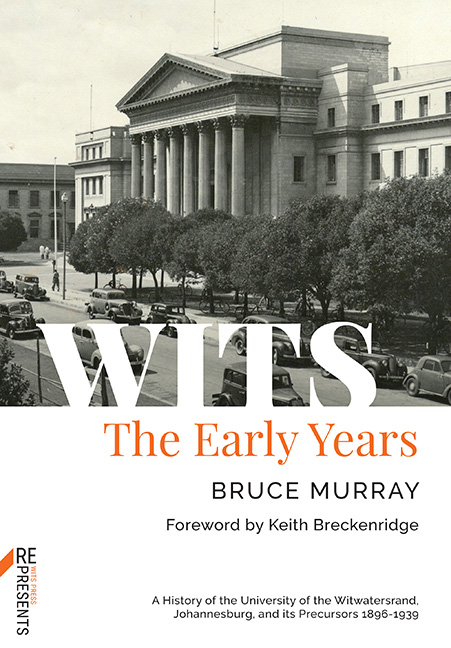10 - Student Life
Published online by Cambridge University Press: 24 November 2023
Summary
For students, Wits in the twenties and thirties was generally a happy place. The student body was relatively small and familiar, the academic demands made on students were by no means excessive, and the students themselves enjoyed being students. They created a full range of clubs and societies to cater for their extramural interests, and rags, intervarsities, raids, and university dances featured prominently in their lives. They were also very proud of their status as students and their membership of the Rand University, advertising this by wearing their University blazers whenever the opportunity allowed. Politically, they were rather more aware by 1939 than they had been in the twenties, though student political activity was as yet sporadic and individualistic.
Wits students were drawn overwhelmingly from Johannesburg, the Witwatersrand, and elsewhere in the Transvaal, and from the middle classes. In 1939, 53 per cent of the students came from Johannesburg, 11 per cent from other Reef towns, and 18 per cent from elsewhere in the Transvaal. The Orange Free State and the Cape each provided 6 per cent of the student population, and Natal 3 per cent. The University, in short, did not attract many students from beyond its own hinterland. It attracted some, but again not many, from the white working classes. Satisfactory statistics on the social background of students in the pre-war period are, unfortunately, impossible to compile, but it is evident that the University served as a medium of upward mobility chiefly for first generation Jewish South Africans, rural Afrikaners, and lower middle-class English-speaking whites. A large proportion of the ‘English’ students had fathers in the professions, but outside of engineering, and later medicine, few were from the wealthiest Johannesburg families. Before World War II, it was still common for these families to send their sons to a British university, preferably Oxford or Cambridge.
The large majority of students travelled each day to the University from home, in Johannesburg primarily by bus and tram, and by train from Pretoria and the Reef towns. University accommodation for out-of-town students was provided in three residences, College House and Dalrymple House for men, and Sunnyside (later Isabel Dalrymple House) for women.
- Type
- Chapter
- Information
- WITSThe Early Years, pp. 337 - 378Publisher: Wits University PressPrint publication year: 2022



